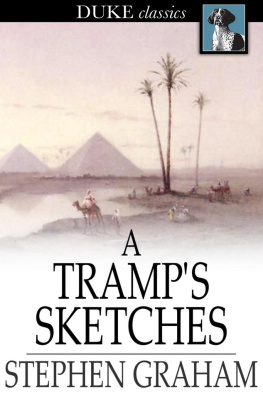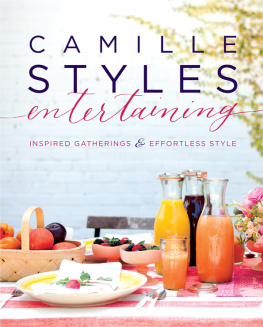Camille Paglia - Vamps & Tramps: New Essays
Here you can read online Camille Paglia - Vamps & Tramps: New Essays full text of the book (entire story) in english for free. Download pdf and epub, get meaning, cover and reviews about this ebook. year: 1994, publisher: Vintage, genre: Detective and thriller. Description of the work, (preface) as well as reviews are available. Best literature library LitArk.com created for fans of good reading and offers a wide selection of genres:
Romance novel
Science fiction
Adventure
Detective
Science
History
Home and family
Prose
Art
Politics
Computer
Non-fiction
Religion
Business
Children
Humor
Choose a favorite category and find really read worthwhile books. Enjoy immersion in the world of imagination, feel the emotions of the characters or learn something new for yourself, make an fascinating discovery.

- Book:Vamps & Tramps: New Essays
- Author:
- Publisher:Vintage
- Genre:
- Year:1994
- Rating:4 / 5
- Favourites:Add to favourites
- Your mark:
- 80
- 1
- 2
- 3
- 4
- 5
Vamps & Tramps: New Essays: summary, description and annotation
We offer to read an annotation, description, summary or preface (depends on what the author of the book "Vamps & Tramps: New Essays" wrote himself). If you haven't found the necessary information about the book — write in the comments, we will try to find it.
Vamps & Tramps: New Essays — read online for free the complete book (whole text) full work
Below is the text of the book, divided by pages. System saving the place of the last page read, allows you to conveniently read the book "Vamps & Tramps: New Essays" online for free, without having to search again every time where you left off. Put a bookmark, and you can go to the page where you finished reading at any time.
Font size:
Interval:
Bookmark:

Books byCAMILLE PAGLIA
Vamps and Tramps: New Essays
Sex, Art, and American Culture: Essays
Sexual Personae:
Art and Decadence from Nefertiti to Emily Dickinson
A VINTAGE ORIGINAL, NOVEMBER 1994
FIRST EDITION
Copyright 1994 by Camille Paglia
All rights reserved under International and Pan-American Copyright Conventions. Published in the United States by Vintage Books, a division of Random House, Inc., New York, and simultaneously in Canada by Random House of Canada Limited, Toronto.
Paglia, Camille
Vamps and tramps : new essays / Camille Paglia. 1st ed.
p. cm.
A Vintage original.
eISBN: 978-0-307-76556-7
1. Popular cultureUnited StatesHistory20th century.
2. Arts, American. 3. Arts, Modern20th centuryUnited States. 4. American literature20th centuryHistory and criticism. I. Title.
E169.12.P334 1994
306.40973dc20 94-12191
constitute an extension of this copyright page.
v3.1
David Shipmans
Judy Garland: The Secret Life of an American Legend
Madonnas
Sex
Mark Begos
Madonna: Blonde Ambition
John Ralston Sauls
Voltaires Bastards
Germaine Greers
The Change
Edward Saids
Culture and Imperialism
Fred Daviss
Fashion, Culture, and Identity
Warren Farrells
The Myth of Male Power
The title of this book evokes the missing sexual personae of contemporary feminism. Vamps are queens of the night, the primeval realm excluded and repressed by todays sedate middle-class professionals in their orderly, blazing bright offices. The prostitute, seductress, and high-glamour movie star wield womans ancient vampiric power over men. That power is neither rational nor measurable. The Apollonian rules we pass to govern the workplace will never fully control the demonic impulses of Dionysian night. Sexual equality before the lawthe first great goal of modern feminismcannot so easily be transferred to our emotional lives, where woman rules. Art and pornography, not politics, show us the real truth about sex.
I want a revamped feminism. Putting the vamp back means the lady must be a tramp. My generation of Sixties rebels wanted to smash the bourgeois codes that had become authoritarian totems of the Fifties. The nice girl, with her soft, sanitized speech and decorous manners, had to go. Thirty years later, were still stuck with herin the official spokesmen and anointed heiresses of the feminist establishment. White middle-class personae have barely changed. Getting women out of the kitchen and into the office, we have simply put them into another bourgeois prison. The panoramic Sixties vision, inspired by Buddhism and Hinduism, called the entire Western career system into question. But that insight has been lost.
The beatniks, the generation of dissenters before mine, went on the roadnot just physically, like Jack Kerouac, but spiritually. Allen Ginsberg, the New York Walt Whitman, made wayfaring songs of an exile in his own land. Fusing Hindu and Hebrew chant with African-American jazz rhythms, Ginsberg reenergized the purist folk style of Bob Dylan, my generations hobo troubadour, who went on to make rock n roll an art form. In Like a Rolling Stone, Dylan forces his faithless heroine to confront the blank-eyed mystery tramp, who is both the artist and personified death, the reality of extinction that defines life itself. Think for yourself, said the Beatles, and let your mind roam where it will go. The tramp is a rover, exploring the wilderness outside the status quo.
Until the end of the Fifties, a sexually free woman was called a tramp, that is, a vagrant or streetwalker, a whore. Joan Riverss gleefully insatiable Heidi Abromowitz, dashing to the dock to greet the fleet, was the dark alter ego of the chaste middle-class girl. We must reclaim the Whore of Babylon, the nature goddess of that complex city of arrogant male towers and hanging female gardens. Vamps and tramps are Babylonian personae, pagan outcasts. They live again in our bold drag queens and gay hustlers, midnight cowboys of the urban canyons. An episode of the Perry Mason television series, starring Raymond Burr, was called The Case of the Vagabond Vixen. Female sexuality, freed from Judeo-Christian sequestration, returns to animal nature. The woman on the stroll (streetwalking) is a prowler and predator, self-directed and no ones victim.
Equal opportunity feminism, which I espouse, demands the removal of all barriers to womans advance in the political and professional worldbut not at the price of special protections for women, which are infantilizing and anti-democratic. As a Sixties libertarian, I also oppose overregulation of sexuality, which has risen to a totalitarian extreme over the past decade in America. The culture is at risk when civil liberties are sacrificed on the altar of career success. Professional functioning in the Apollonian capitalist machinewhich I laud as the vehicle of womans modern liberationmust not be confused with full human identity. Nor can office politics dictate our understanding of sexuality, which begins as a force of nature outside the social realm.
White middle-class style, despite the Sixties rebellion, still tyrannizes us, because corporate business, with the streamlined efficiency of the profit-based work ethic, was born in Protestant Northern Europe, before and after the industrial revolution. It has been puritanical and desensualized from the start. Bland on the surface and seething with Darwinian hostility below, office manners grind down and homogenize all ethnic and racial differences. The world is going WASP. We must scrutinize and monitor business operations when corporations corner monopolies or mushroom into faceless global mega-entities rivaling nation-states, but business style, fetishizing the white Protestant persona, may be beyond reform, because it is simply too effective.
We need to recast the daily dramas of our public theater. Meditating on vamps and tramps makes us see the decorous borders of professional life. In calling for a room of ones own, Virginia Woolf created a central metaphor of twentieth-century feminism. Emily Dickinson, by a turn of the key, had achieved that secure mental space, but she was the daughter and sister of successful lawyers. A perquisite of privilege and prosperity, the room of ones own was already too bourgeois for my subversive generation, whose brash rock spirit counsels: Get out of the house, and keep on running. A car of ones own, the great equalizer, is more the mode of American Amazonism. On the open highway, battling stormy nature and dodging mammoth eighteen-wheelers (todays piratical tramp freighters), woman has never been more mobile, more capable of the archetypal journey of the heroic quest, a traditionally masculine myth.
The new tramp is not a displaced person, except insofar as he or she is a refugee from the prison of the nuclear family. Life is a condition of searching for meaningan active and affirmative process, unlike the bunkered defeatism of modernism and postmodernism. The multicultural twenty-first century will also require research, as we drift further and further from our ethnic origins. By the principle of what I call creative duality, we must recover and celebrate our ethnic roots, while at the same time identifying ourselves with the spiritual homelessness of the tramp. The task is to balance philosophical detachment, the isolated consciousness, with a sense of community and engagement with social issues.
Font size:
Interval:
Bookmark:
Similar books «Vamps & Tramps: New Essays»
Look at similar books to Vamps & Tramps: New Essays. We have selected literature similar in name and meaning in the hope of providing readers with more options to find new, interesting, not yet read works.
Discussion, reviews of the book Vamps & Tramps: New Essays and just readers' own opinions. Leave your comments, write what you think about the work, its meaning or the main characters. Specify what exactly you liked and what you didn't like, and why you think so.



